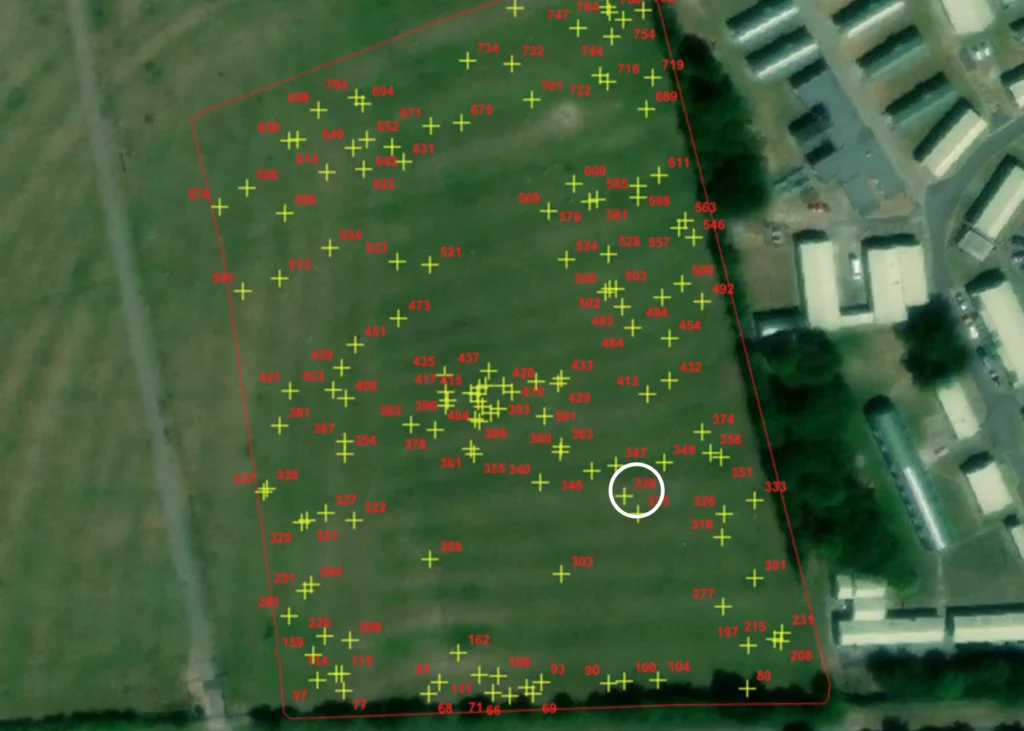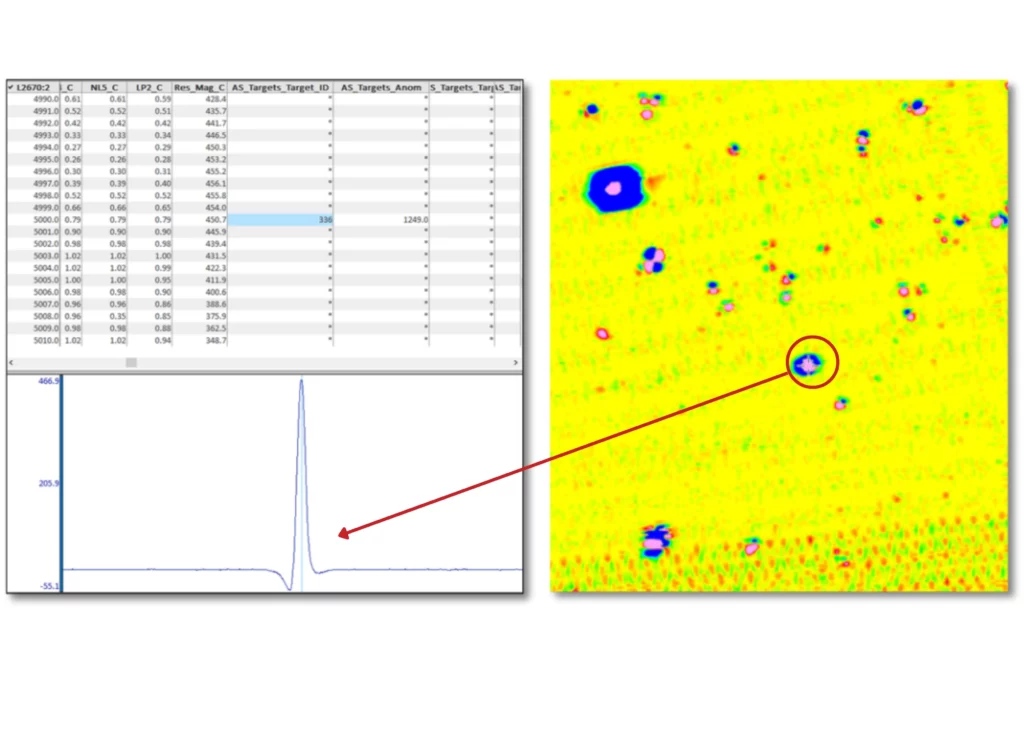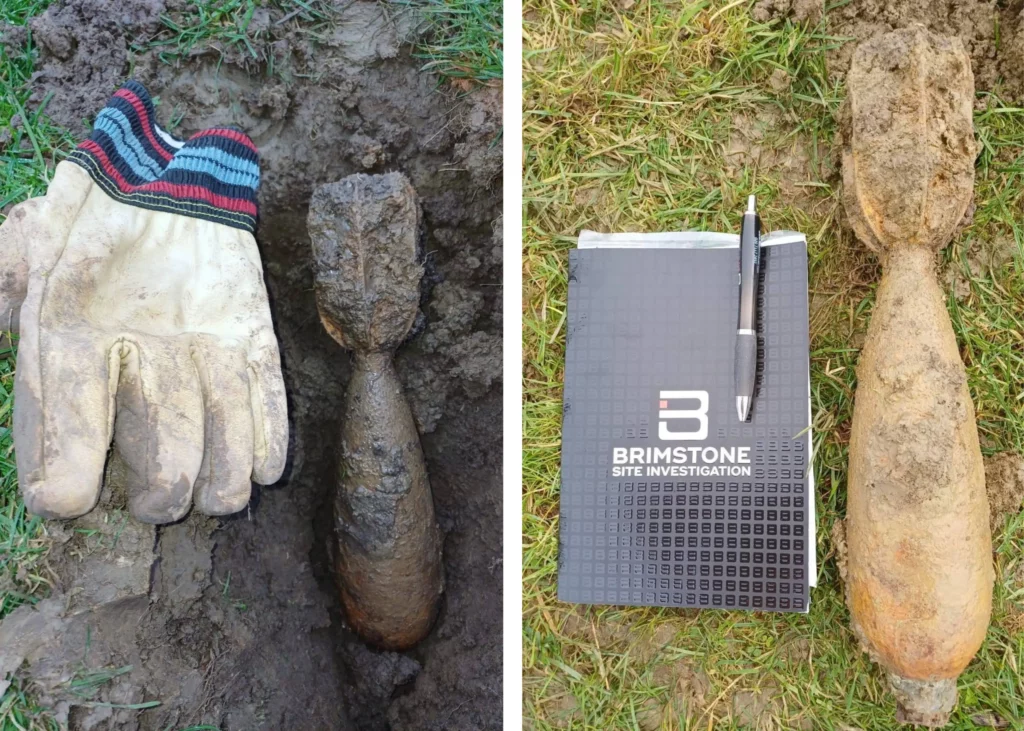From Data to Discovery: Taking an in-depth look at our first UXO find of 2024
Last month we shared the news that Brimstone’s engineering team had made our first UXO find of the year, after uncovering a 3″ ML Mortar at a site in Nottinghamshire.
This find wasn’t just luck or by chance, it was the result of a thorough, proven process, combining a range of our UXO services and personnel.
On this week’s blog we are taking an in-depth look at the process from data to discovery for this particular UXO find, giving you a behind-the-scenes look at how things work at Brimstone UXO.
Undertaking a non-intrusive UXO survey of the site
Our work on this site started with a non-intrusive UXO survey, using our push-cart system. A non-intrusive survey uses state-of-the-art equipment to clear large areas up to 6m in depth using magnetometry. By detecting ferrous materials and mapping magnetic signatures, our magnetometry capabilities help identify potential risks such as buried metal objects or UXO.
Our push cart is a five-channel system for the detection of ferro-magnetic anomalies in small to medium sized areas, carried out by a specialist two-person team.
Following the field collection, the data our engineers had collected was sent back to our in-house geophysics team at Brimstone’s Head Office. The data underwent several steps to reduce noise and improve the survey quality. We also used a specialist computer model to look at the signals measured by the equipment and compared them against a bank of known UXO signals.
The data provided us with a range of targets which require further investigation. You can see below all the targets that were identified for this site in particular, with target 336 being the target that resulted in the UXO find.

Taking a deeper look at the data
Below you can see the signal this target produced and how it appeared on the false colour map.
The raw magnetic field false colour map generated from the data shows the magnetic field variations across the surveyed area. Data noise reduction and filtering techniques were applied by our team, resulting in the generation of a residual magnetic field image, which helped isolate and highlight the subtle variations in the magnetic field.
A final round of data processing was carried out, with extensive cleaning, filtering, and correction processes employed to refine the dataset. Through these rigorous procedures, analytical signals were selected, which exhibited magnetic signatures resembling those of known UXO. These selected analytical signals represented the magnetic anomalies of interest, indicating the potential presence of unexploded ordnance.
Using our bespoke software, our team was able to make estimations of the depth and mass of the item, along with its location in coordinates accurate to 5 centimetres.

Unearthing the 3” ML Mortar
With the data indicating a possible item beneath the surface at target 336, we deployed our engineering team back to the site to carry out a UXO target investigation. We recommended that no intrusive works started on site until this had been carried out.
A target investigation involves our engineers uploading the coordinates to a GPS system to pinpoint the targets on site. They then use hand tools to unearth the targets, in accordance with our standard operating procedures, and lean on the resources of excavators for significantly deeper targets.
Subsequently, upon carrying out the target investigation, our UXO engineers unearthed a 3” ML Mortar, a significant find!
The 3” ML Mortar weighs around 4.5kg and was a common anti-personnel weapon used in WWII by the British Army. The pear-shaped item had a brown body with a green tail red bands and a five-finned tail. There were several variants produced, including smoke, white phosphorous, inert practice, and parachute illumination versions. Their hazardous fill was 882g of RDX/TNT.
It was estimated that over 6.5 million HE rounds were produced in 1942 alone.
Following a period of consultation between Brimstone and the local police, the item was safely disposed of by the Army on the same day. This ensured there was minimal downtime for our client, preventing costly delays while keeping everyone safe.
While Brimstone does have the licenses and capability to dispose of items such as this one, we initially lean on the resources provided by the British military to keep costs as low as possible for our clients. This is why the Army disposed of the item on this occasion.

The first UXO find of 2024
The 3” ML Mortar was our first UXO find of 2024. Since then, our explosives engineers have uncovered multiple items around the UK including high explosive projectiles, smoke mortars, high explosive mortars, a Number 36 Mills Grenade, a 75mm French HE shell and a British 18lb Shrapnel Shell!
UXO services you can trust
At Brimstone, we care about your development as if it was our own. Our deep industry knowledge, UXO expertise and investment in technology make us the logical choice for your safe build.
We can provide a full spectrum of UXO services, from risk assessments and surveys to investigations and disposals. No matter where your project may be, we can provide bespoke solutions to the risk posed by unexploded ordnance.
We’d love to hear from you if you have an upcoming project that requires UXO support. Please reach out to our commercial team at enquire@brimstoneuxo.com or 020 7117 2492.
You can keep up to date with Brimstone by following us on Facebook, Instagram, X (formerly known as Twitter), LinkedIn and YouTube.